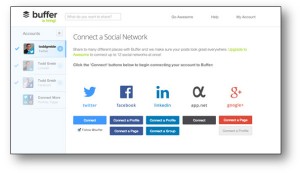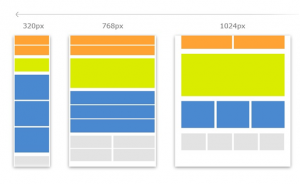Online advertising is easy… at least it’s made to look that way by those that sell it.
Anyone who has dipped their toes in the Google waters knows that it is actually far from easy. Sure, it’s easy to set up your account and get your ads running, but it’s hard to make the advertising work at an economic level.
Whilst there are many layers to online advertising platforms, there are some common sense concepts that make sense when we look at online advertising from a press advertising perspective.
Here are five practices that should be applied to online advertising written as if they were for press ads.
1. Choose your geography.
If you run a business that serves New York then there’s little point in advertising in the Chicago Tribune.
By default Google will set your ads to run to the whole world. You need to make sure that only people within your target geography are seeing your ads.
The same goes for languages. If you don’t specify, Google will run your ads to everyone. Again, in print, you wouldn’t run an ad in French in an English newspaper – it would simply make your company look foolish.
2. Choose your target demographic.
If you sell women’s shoes, you wouldn’t run your ads in Field and Stream. Instead you would choose titles such as Cosmopolitan and Vogue.
On the Google Display Network you are able to do the same – in fact, much more. You can select to show your ads to women only (although in the same way that there will be a number of men that read Cosmo, there will always be some overlap), who are between 18 and 45, and you can target them when they are looking at articles about shoes on specific websites that you choose. This level of targeting is really not possible with print which means that the potential for wastage is significantly reduced with a well configured online advertising campaign.
And there’s more, with advanced options you can even target income brackets – after all, why advertise to people who might aspire to become your customers, but for whom your products are simply out of reach. Equally, if your product is aimed at lower income groups, why advertise to people who currently don’t need it.
3. Pick your ad slot.
In newspapers and magazines advertisers pay premiums for the choicest ad slots. Running your ad on the inside cover of a magazine, or on page 3 is going to be more expensive than running it on a left hand page further back in the book.
In the same way, an ad on the home page of a popular site is going to cost more than an ad deeper into the website. However, it may well be that your particular product is better suited to a specific page on the site. In print, for example, you may find that your ad works better on the sports pages, or within the health section.
Do the same online. Don’t compete with everyone and their brother for a home page placement. Instead look for the pages where your prospects are most likely to be, and target those either through specific placements or through topic targeting within a placement.
4. Are you a newspaper or the Yellow Pages?
Before the internet if you wanted to find something – a locksmith, a decent restaurant or someone that could rent you a tuxedo – you grabbed the Yellow pages.
You were searching for a specific product or service and these directories listed these in a logical, easy to use format.
Today the Google and bing search networks are the equivalent of these directories.
On the other hand, a lot of the advertising you consumed – and responded to – was found in newspapers. You were reading your local newspaper and there was an ad for a sale at your local shoe store and you decided it would be worth a visit. You weren’t looking for shoes, but the shoes were looking for you.
This is the equivalent of the Google Display Network where your ads appear in front of likely prospects, hopefully when they are in the right frame of mind to be receptive. An ad for flowers just before Mother’s Day, or for barbecues just before the weekend spring to mind.
With search ads the target is active. With display ads the target is passive. This impacts on the way in which we present our ads and the copy and calls to action we would use.
5. Track your response.
One of the biggest bugbears of print advertisers was tracking. How did we know people were reading our ads? We added special codes, and coupons, and changed the format of our mailing address, all so that we could glean the precious data points that would indicate the success, or otherwise, of our advertising activities.
Today this is called Google Analytics. If you went back 30 years and offered marketers the power of Analytics, they would have paid you a small fortune for the tool. Today – probably because it is free – this data is undervalued and often ignored. Businesses will often have Google Analytics code installed on their site because their web developer added it…. But no-one monitors the account and no-one develops actionable insights from the data.
Online advertising is a relatively new phenomenon, but advertising is not. The trusted principles that have governed successful advertising campaigns in the past are still the foundation of successful campaigns today.
Many of the questions advertisers ask themselves about their online campaigns have, therefore, been asked – and answered before. Do not fall into the trap of thinking that because the players have changed the rules have also changed.
Apples still fall from trees hundreds of years after Newton.
(169)
Report Post







